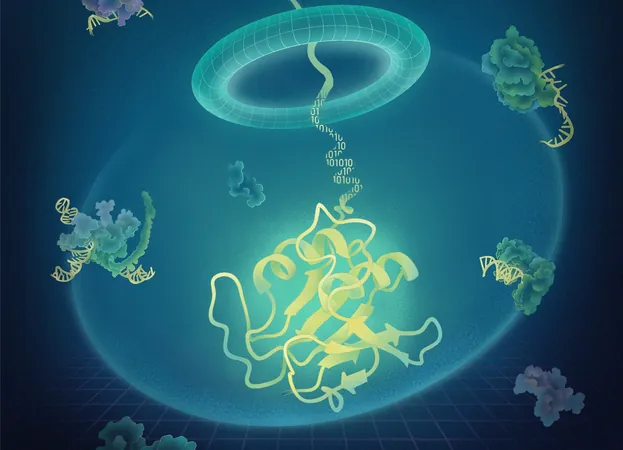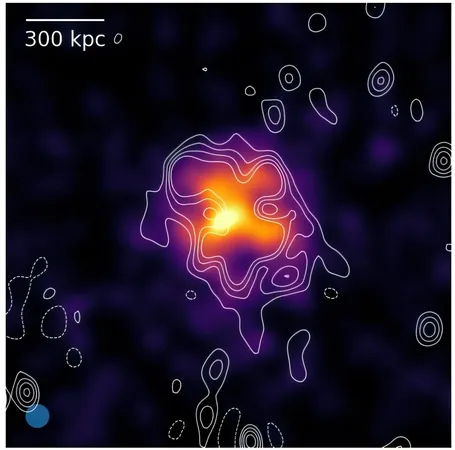
Revolutionizing Protein Engineering: Meet the Game-Changing AI-Powered Strategy
2025-07-08
Author: John Tan
Transforming the World of Protein Engineering
In a groundbreaking breakthrough, researchers have unveiled a revolutionary method that promises to redefine protein engineering as we know it. Dubbed AI-informed Constraints for protein Engineering (AiCE), this innovative approach is set to accelerate protein evolution by seamlessly integrating both structural and evolutionary constraints into a versatile inverse folding model—eliminating the necessity for specialized AI training.
Tackling the Challenges of Traditional Techniques
Published in the esteemed journal Cell on July 7, this study addresses crucial shortcomings in conventional protein engineering methods. Led by Prof. Gao Caixia from the Institute of Genetics and Developmental Biology (IGDB) at the Chinese Academy of Sciences, the research highlights the limitations of current techniques that often struggle with cost, efficiency, and scalability.
A Smarter Way to Engineer Proteins
Optimal protein engineering should ideally deliver maximum results with minimal resources. However, many existing AI-driven methods are computationally demanding, sparking a pressing need for more straightforward, user-friendly solutions that maintain accuracy while promoting widespread adoption in the scientific community.
The Power of Prediction: AiCEsingle
At the heart of this development lies AiCEsingle, a specialized module designed to predict high-fitness (HF) single amino acid substitutions. By extensively sampling inverse folding models—which generate compatible sequences from protein 3D structures—AiCEsingle significantly boosts prediction accuracy by incorporating essential structural constraints.
Performance That Outshines Competitors
When benchmarked against 60 deep mutational scanning (DMS) datasets, AiCEsingle emerged as a formidable contender, outperforming existing AI methods by a staggering 36% to 90%. This capability has been validated for complex proteins and protein-nucleic acid complexes, highlighting the profound impact of structural constraints alone, which yielded a 37% increase in prediction accuracy.
Addressing Epistasis with AiCEmulti
To further advance this field, the team also developed the AiCEmulti module, specifically designed to tackle the complexities of negative epistatic interactions in combinatorial mutations. By integrating evolutionary coupling constraints, AiCEmulti allows for the accurate prediction of multiple high-fitness mutations with minimal computational expense, thereby enhancing its practicality.
Real-World Applications of the AiCE Framework
Utilizing the AiCE framework, the research team successfully engineered eight diverse proteins, spanning a range of structures and functions. Among these are deaminases, nuclear localization sequences, nucleases, and reverse transcriptases. These advancements have led to the development of cutting-edge base editors for precision medicine and molecular breeding, including: enABE8e, a cytosine base editor with a markedly reduced editing window by approximately 50%; enSdd6-CBE, an adenine base editor boasting a 1.3x higher fidelity; and enDdd1-DdCBE, a mitochondrial base editor with an astonishing 13x increase in activity.

 Brasil (PT)
Brasil (PT)
 Canada (EN)
Canada (EN)
 Chile (ES)
Chile (ES)
 Česko (CS)
Česko (CS)
 대한민국 (KO)
대한민국 (KO)
 España (ES)
España (ES)
 France (FR)
France (FR)
 Hong Kong (EN)
Hong Kong (EN)
 Italia (IT)
Italia (IT)
 日本 (JA)
日本 (JA)
 Magyarország (HU)
Magyarország (HU)
 Norge (NO)
Norge (NO)
 Polska (PL)
Polska (PL)
 Schweiz (DE)
Schweiz (DE)
 Singapore (EN)
Singapore (EN)
 Sverige (SV)
Sverige (SV)
 Suomi (FI)
Suomi (FI)
 Türkiye (TR)
Türkiye (TR)
 الإمارات العربية المتحدة (AR)
الإمارات العربية المتحدة (AR)